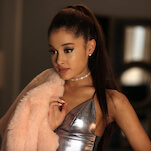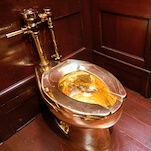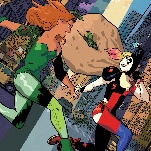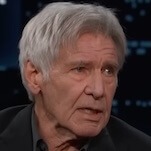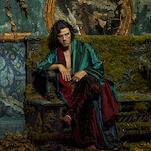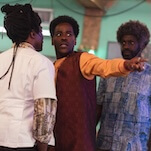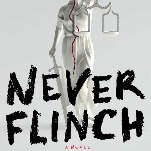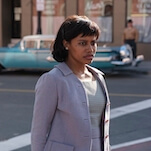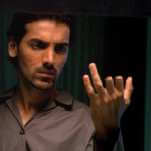Sean Murphy’s alternate take on the Batman mythos draws to a close this week with Batman: White Knight #8 (DC Comics). It’s hard to imagine how the story could have fit into the previous seven issues, because this final one delivers a significant amount of narrative. White Knight has been selling well enough for DC, and with the ink barely dry on the end of the first series, there are already questions of whether Murphy will be given an opportunity to revisit the story with a second.
The art is easily the book’s biggest draw. Murphy’s style is dark, kinetic, and fractured in a way that suits Gotham. There’s a marked physical difference between the Joker and his alter ego, Jack Napier, that is really emphasized in #8. They might share a single body, but the way each of them stands and speaks is entirely different. That ability to distinguish characters by body language just as much as costume or hair color has served Murphy well for the entire run of the series, and ultimately this book is a joy to look at. Matt Hollingsworth’s colors are muted and dull, appropriately gritty for the setting.
At the outset, White Knight suffered from a marketing problem that it never quite got over. Many sites originally billed the book as “What if the Joker was a good guy?” which sold the book short and muddled the focus. Unfortunately, Murphy didn’t help matters because he couldn’t quite decide who the story was about. For just an eight-issue miniseries, the book has a very large core cast: not just the Joker and Batman, but two Harley Quinns, Nightwing, Batgirl, Alfred, Commissioner Gordon, Mr. Freeze, Clayface, Poison Ivy, Mad Hatter, and at least a handful of other easily recognizable villains, not to mention Bullock and Montoya. They don’t just make quick cameos, either; these are all characters that play at least some specific role in the story.
Murphy came up with a great way to address the inconsistencies between the first version of Harley Quinn and the most recent iterations, particularly the DCEU movie version. But he completely fails to address the deeply abusive nature of the relationship between her and the Joker, which is particularly disappointing given that they both play a central role to the story, and the Joker gets physically violent with both versions of Harley. It’s also frustrating to see that both Harley and Barbara act as moral compasses throughout the book, their roles limited to serving as guides for the men acting badly around them.
Despite being a final installment, this issue feels like it belongs in the middle of a larger story. That’s the biggest frustration with White Knight: There’s just too much story to pack into eight comics. There are times when rushed pacing is appropriate, especially in an action-packed cape-and-cowl book, but Murphy is also trying to grapple with weighty ideas that need more space to breathe. The relationship between law enforcement, the public, and vigilantes in Gotham is a complicated one that he doesn’t give enough time to. In a similar vein, a lot of the conversations about legacy and the importance of the community that has grown (or failed to grow) in Gotham don’t have as much time as they deserve, especially as this is ostensibly the end of the story Murphy wanted to tell. There are multiple large twists in the last few pages that unbalance the story that’s come before, even as they set up a pretty great cliffhanger ending, which opens the door for a sequel. That leaves the really interesting, nuanced ideas that Murphy only casually touches on with the short end of the stick. They’re battling some truly excellent fight scenes, almost 80 years of canon, and a completely unnecessary inclusion of Nazi scientists. With four more issues or some stricter editing, the book would have gone from good to great.








